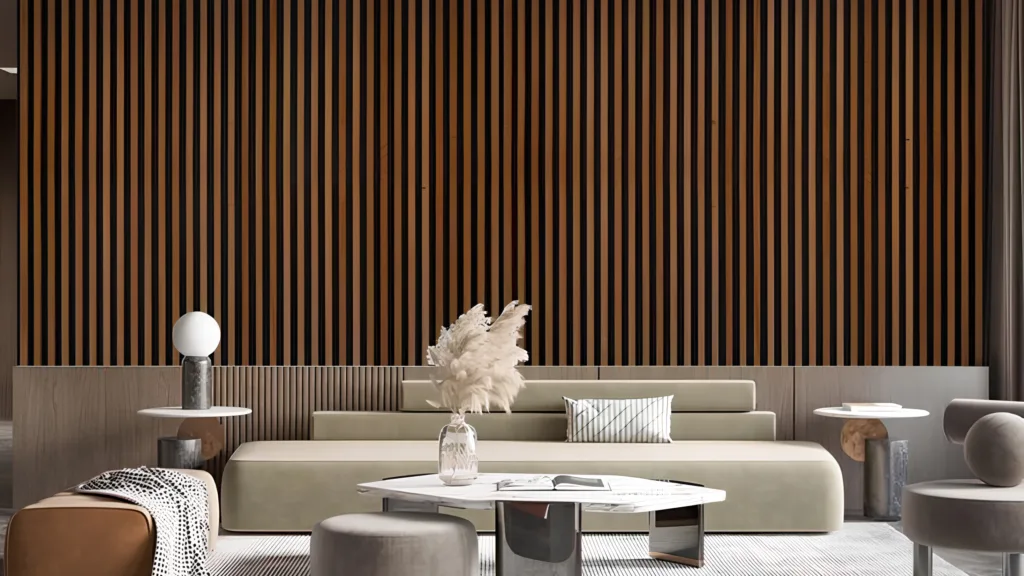Textured wall paneling is a popular product in wood customization, significantly enhancing the overall aesthetic and quality of a space. However, the interior wall paneling customization industry often faces the challenge of meeting customer expectations, not because of the product design, but due to unsatisfactory installation processes. This highlights the importance of proper installation alongside high-quality products.

Traditional Installation Methods
Here are some common installation methods in the decorative interior wall paneling industry, each with its own set of challenges.
Full Wood Base
This method involves building the wall with wood and then attaching the wall panel with air nails or screws. It is the most common installation technique. However, using treated logs on a large scale can result in formaldehyde and other toxic substances exceeding safety standards, posing significant health hazards. Additionally, while this method is the easiest for leveling, it still falls short in achieving optimal flatness.
Suggestions for Improvement
Consider using WPC (Wood Plastic Composite) or PVC interior wall paneling. These materials do not contain harmful chemicals like formaldehyde, making them safer for use. They also offer customizable options to meet various design needs.
Wooden Hanging Board
This method involves hanging the wooden piece against the textured wall paneling after installing it directly on the wall. It reduces the amount of primer material needed and is more environmentally friendly. However, it makes adjusting the wall panel difficult, and issues with flatness and verticality persist.
Direct Paste
Applying styrofoam or other glue directly to the wall panel saves time and effort but is the least environmentally friendly and most inconvenient for customers.
Solving the Wall Surface Problem
In addition to WPC interior wall panels, a matching WPC wood plastic keel can be used. Before installing the interior textured wall paneling, the keel is installed on the wall, and then the decorative paneling is fixed to the keel. This approach addresses the leveling problem.
The WPC keel is waterproof and mold-resistant, and it creates a gap between the textured wall paneling and the wall, allowing for better air circulation. This helps solve the environmental and decay issues associated with painted wall panels. The unique snap structure of WPC interior wall paneling hides the fixings, enhancing the aesthetic appeal and quality of the interior decorative wall panels.
Conclusion
Identifying and addressing installation issues is key to improving the overall quality of textured wall paneling. With over 22 years of experience in the wood customization industry, Witop Decor is committed to high-end home customization and customer satisfaction. After extensive trials, Witop Decor has successfully addressed the common installation challenges, continuing to strive for a more beautiful and better home experience for customers.
Related Products

Chinese manufacturer providing high quality and stable price of wpc wall cladding

Chinese manufacturer providing high quality and stable price of composite exterior wall panels

Supplier of exterior wall panels with stable quality and Right Price

Supplier of outdoor wall panels with stable quality and Right Price

Provide you with high quality and competitively priced wpc decor panel





